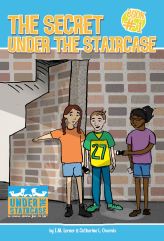You’ve worked hard developing your writing skills, including learning how to properly format your manuscripts. Your critique group has given the thumbs up on some of your articles or short stories. The next step: try to market your work. But who do you submit to?
There are many resources to help you find the right market. Depending on your genre(s) of choice, there is probably a writer’s market guide for that type of writing. For example, I write for both the children’s and adult’s market, so I use the “Children’s Writer’s & Illustrator’s Market” and the “Writer’s Market” guides. I also write for the Christian market, so I have the “Christian Writer’s Market Guide”.
Most bookstores carry several different writer’s guides. Peruse one before you buy to find the best one that suits your needs and seems to be easy to use. Make sure you buy for the current year. The market changes often, and you want to be as up to date as possible.
With internet access you may wonder why it is even necessary to buy a market guide. Granted you can find a lot of publishing information online, but a market guide has done that labor intensive work for you. You just need to pick which publisher seems to match your interests. Make sure, though, that you check that publisher’s website to double check their current needs.
Most market guides will give you tips on how to get published, or how to keep good records. They will usually list terms used in the business, and will list conferences and contests that are forthcoming. Costs start at $18 (online) up to over $30. The newest editions come out in the latter months of the previous year or early in the current year. Try to buy around these times to get the most for your money.
“Writer’s Market” is now available online. Although it is a good source, I find it a little hard to work with. I like the freedom of being able to pull my book off the shelf and peruse and insert sticky notes or write comments in the margin. It takes a long time to look through the online list, and you can’t just “flip” to look through a particular group of books. The value of the online version is that you have the most current information as it comes in. Since it is still relatively new, I’m sure they will improve search features as time goes on.
If funds are really tight and you can’t afford the most current guide, buy an older version from a thrift store, used bookstore, or at the library’s book sales. You can use the information to give you some names of publishers, but you will have to check the websites for accurate information (new editors, change of address, current needs, etc.). You will also miss out on any new publishers that have been added to the current issue, or you may find that the publisher you were interested in is no longer in business.
A market guide is a valuable tool if you are serious about getting published. Study it and then start sending out those submissions!
Filed under: uncategorized | Leave a comment »









